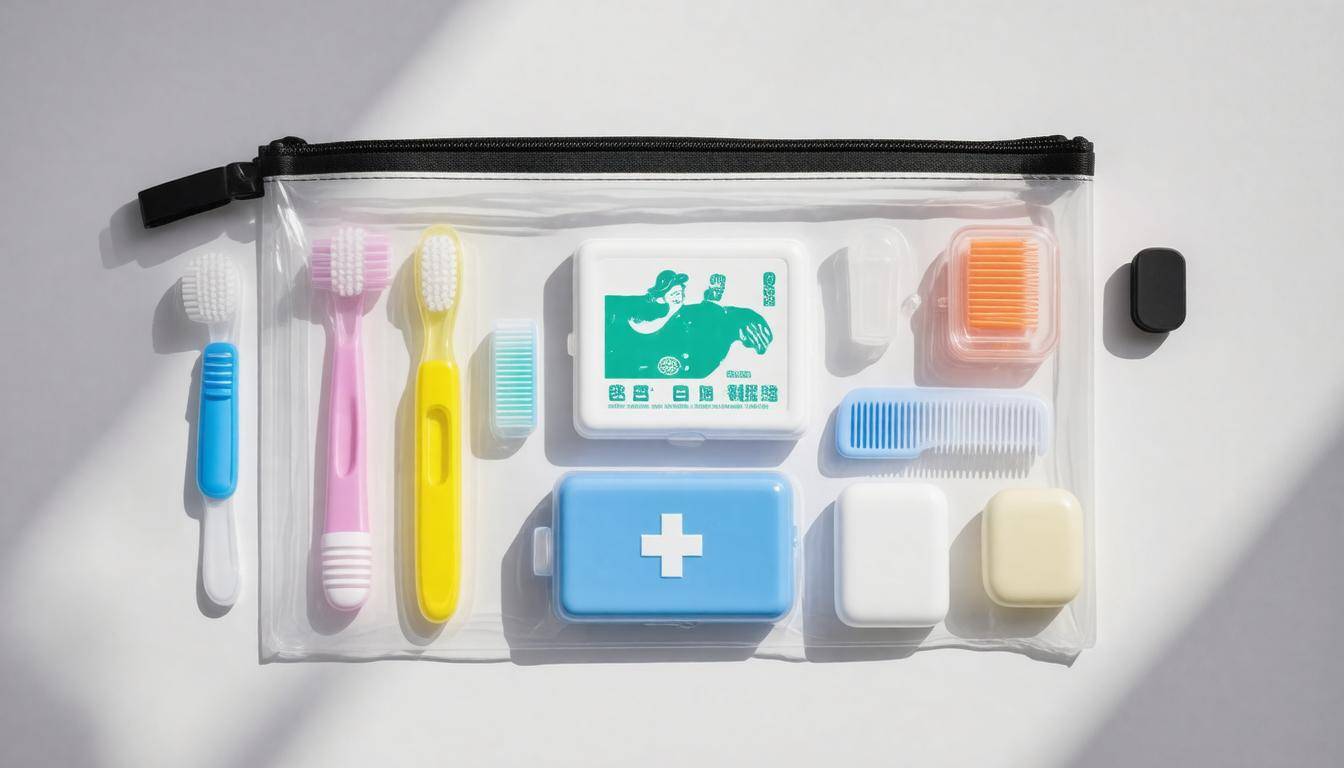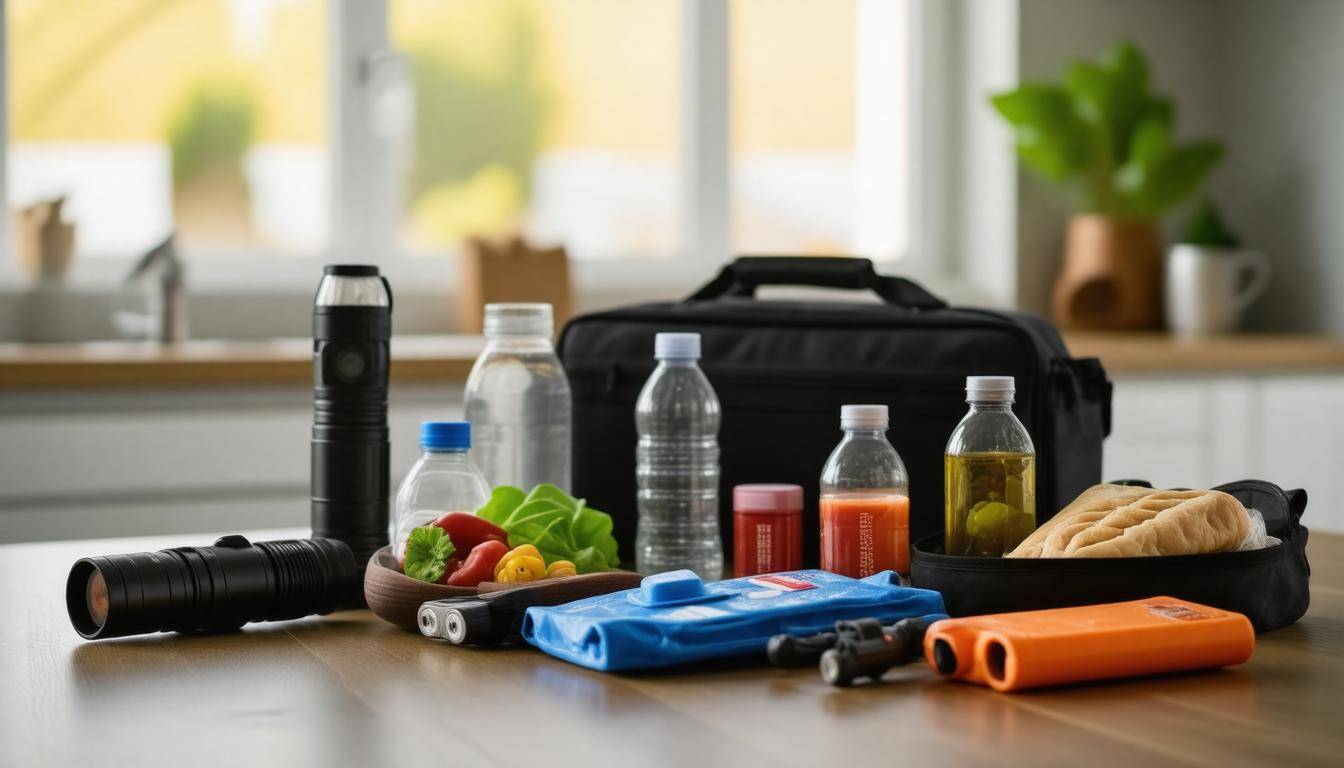Earthquakes can strike without warning, leaving many people feeling unprepared and anxious about what to do. Living in Osaka, it’s essential to take steps to ensure your safety and that of your loved ones during these unpredictable events. Creating a seismic safety checklist may seem overwhelming, but it can be simplified by focusing on practical actions you can take right now. From securing heavy furniture to assembling an emergency kit, these preparations can help you feel more confident and ready when the earth starts to shake. Let’s explore how to create a comprehensive plan that will enhance your family’s earthquake readiness.
The Osaka Seismic Safety Preparation Checklist should include key items such as securing heavy furniture, creating an emergency kit with essentials like food, water, and first aid supplies, developing a communication plan with family members, and identifying safe spots in your home. Additionally, it is crucial to familiarize yourself with local evacuation routes and participate in community earthquake drills to enhance overall preparedness.
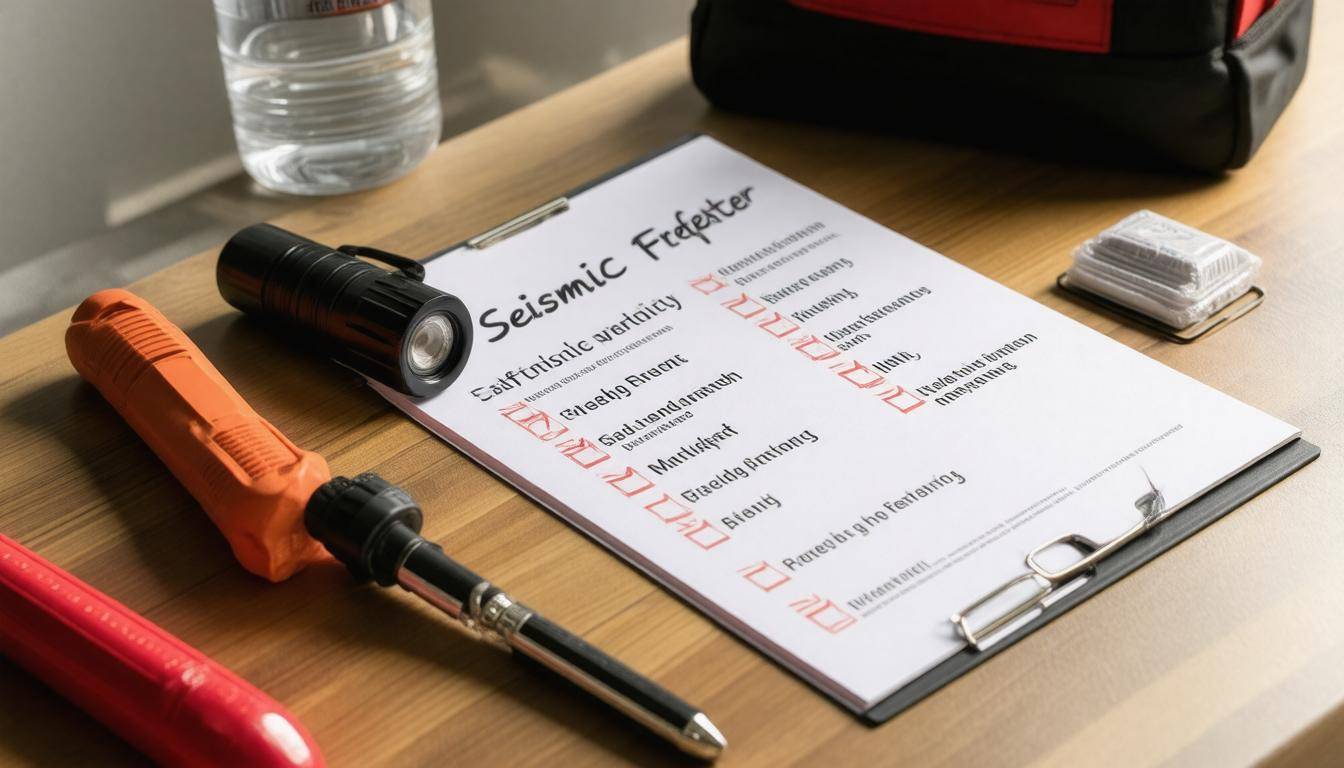
Comprehensive Safety Measures in Osaka
When it comes to earthquake preparedness, personal and family safety strategies are just as critical as the structures we live in. Residents in Osaka are encouraged to take proactive steps at home to create a safer environment. This starts with assessing your home’s layout and identifying potential hazards. For instance, securing heavy furniture like bookshelves or cabinets to walls can prevent them from toppling during tremors. The last thing you want is something valuable or dangerous crashing down on you when the earth begins to shake.
Another recommended practice is to establish a clear escape route within your home. This might include removing obstacles that could impede movement, particularly around exits and emergency equipment such as fire extinguishers. Regularly practicing this evacuation plan will give everyone confidence and clarity should an earthquake occur.
Furthermore, having an emergency supply kit readily available is crucial. Think of it as your lifeline during tumultuous times—stock it with non-perishable food, bottled water, flashlights, batteries, first aid supplies, and important documents sealed in a waterproof bag. Ideally, this kit should be easily accessible but also protected from damage by any potential falling debris.
In addition, Osaka residents should consider participating in community drills organized by local authorities. Such drills not only provide practical experience but also foster a sense of unity among neighbors facing similar challenges. It’s remarkable how much more prepared one feels when they know their community is ready too.
A recent study revealed that neighborhoods actively engaging in preparedness drills reported a 40% increase in residents feeling prepared for an emergency situation. This highlights the impact readiness can have not just on individuals but communities as a whole.
Accompanying emergencies often bring overwhelming anxiety and uncertainty. One way to combat this is by educating yourself about what to expect during an earthquake. Familiarizing yourself with the appropriate response techniques can significantly lessen fear during an actual event; knowing when to “Drop, Cover, and Hold On” puts power back into your hands amidst chaos.
As we explore these safety measures further, it will become essential to focus on specific items that enhance your readiness in times of need.
Assembling Your Emergency Kit
The idea behind an emergency kit is quite simple: it serves as your lifeline in the aftermath of a disaster. An expertly assembled kit can mean the difference between panic and calm, and knowing what to pack ensures that you and your loved ones are equipped to face any situation.
When thinking about the essentials, water stands out as the first priority. Ideally, you should store one gallon per person per day for at least three days. This isn’t just a guideline—it’s a crucial standard when you consider the potential for disrupted access to clean drinking water after a quake. But remember, factors such as hot weather conditions or additional family members can increase your needs, so plan accordingly.
As we shift our focus to food, non-perishable items are key. Consider packing canned goods, energy bars, and dried fruits—things that provide nutrition without needing refrigeration. Selecting food items with high energy content is wise, as they will help sustain strength in stressful situations. For instance, high-protein snacks can keep spirits high and energy levels stable during emergencies.
Furthermore, a robust first aid kit can serve many purposes beyond just treating wounds. When assembling one, ensure it contains bandages, antiseptics, necessary medications, and easily understandable instructions or a basic manual on how to administer first aid. It might also be worth seeking out community training sessions on CPR or first aid; these skills can prove invaluable.
Now comes the tools. A multi-tool is handy because it combines various devices into one manageable package—think of it as a compact survival toolbox! Having a flashlight with extra batteries is crucial since power outages often accompany earthquakes. Don’t forget a whistle; it can help rescuers locate you when vocal calls become difficult.
Transitioning to personal belongings, packing extra clothing, sturdy shoes, and hygiene supplies is essential. Even though you may not need them immediately following an earthquake’s chaos, having them will make life easier in the ensuing days where daily routines take a backseat to recovery efforts.
Additionally, prepare for the worst by safeguarding your important documents. Gather everything from copies of IDs to medical records and insurance policies in a waterproof container. In the event of destruction or loss of property, having this information readily accessible will save you from significant stress.
You might also consider adding some form of communication devices, like a battery-operated AM/FM radio to stay updated on local news or extra chargers for your phones. Those little items can become vital lifelines when regular communication channels are severed.
Many families in Osaka understand that personalizing their kits makes the experience less daunting; including comforting items like toys or books for children helps ease anxiety during something as traumatic as an earthquake.
With this foundational preparation in place, the next step involves focusing on how best to protect your living environment and cherished possessions during potential seismic occurrences.
Securing Your Home and Belongings
When preparing for potential earthquakes, it’s critical to think beyond just assembling an emergency kit; the next step is to ensure that your home itself is a safe haven during seismic events. Unsecured items can become dangerous projectiles, causing injuries or even fatalities. Therefore, consolidating your space by securing furniture and valuables can make all the difference in a crisis.
Begin this process with large pieces of furniture, such as cabinets and bookcases. Anchoring them to the wall using brackets or straps should be your first step. Not only does this keep them vertical during shaking, but it also provides peace of mind knowing that these heavy objects won’t fall over unexpectedly. This isn’t merely precautionary; consider the average weight of a fully stocked bookcase – it can weigh hundreds of pounds! The last thing you want is to be in the vicinity of that kind of mass tumbling towards you.
By taking care of heavier furniture, you’re effectively diminishing the risk of severe injuries in case of an earthquake.
Next on your list should be fragile items like vases, ceramics, or even picture frames. Many families cherish these items and wouldn’t like to see any damage — not to mention the safety hazards they present if they were to shatter upon impact with the ground. Utilizing museum putty is an excellent solution; it’s a non-damaging adhesive meant specifically for securing delicate objects in place. You simply apply a small amount beneath each item, and voilà! They remain where they belong.
| Item | Securing Method | Benefits |
|---|---|---|
| Bookcases | Brackets | Prevents them from toppling |
| Fragile items | Museum putty | Keeps items intact during shocks |
| TVs and Monitors | Anti-tip straps | Reduces the risk of injuries and damage |
Additionally, other potential hazards deserve attention: electronics such as televisions and monitors can pose risks if they aren’t properly secured. Applying anti-tip straps not only prevents them from toppling but also protects those around them from injury—especially children or pets who may inadvertently strike against falling objects.
While securing your belongings is crucial for safety, understanding where to find shelter is equally vital in the event of an earthquake. It’s important to identify those safe spots throughout your home.
Designating Safe Spots in Your House
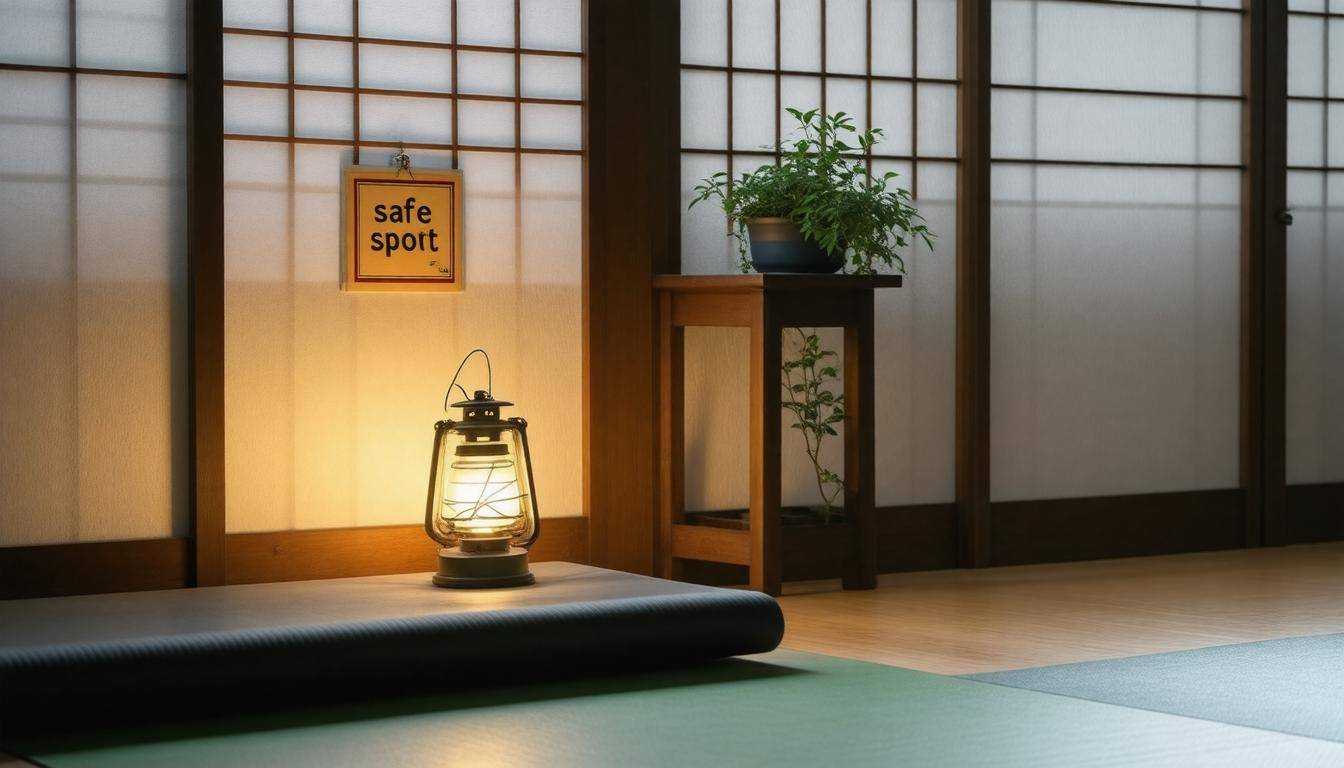
Knowing where to take cover in your home can literally save lives during an earthquake. Ideal safe spots include locations under sturdy furniture, like tables or desks that have a solid structure capable of withstanding the force of falling debris.
For instance, a heavy dining table or a corner desk may serve as effective refuge. However, it’s important to check the furniture’s ability to hold up against potential shaking and falling objects. I remember moving my own dining room table away from windows and heavy items to create a safe zone—a simple change that could make all the difference.
Another common misconception is the safety of doorways. While standing in a reinforced doorway was once recommended, modern building codes suggest that this method is becoming less reliable, especially in homes built after the 1980s. Instead, it’s more beneficial to seek shelter underneath substantial pieces of furniture which are less likely to move during tremors.
As mentioned previously, there’s ongoing debate about various safety methods during earthquakes. The “Triangle of Life” advocates for positioning themselves next to furniture rather than directly underneath it since this can provide protection if large objects fall. Although this method has its proponents, local authorities still advise finding shelter beneath sturdy structures, reinforcing the importance of following their guidelines.
What’s critical is ensuring every family member knows these designated safe spots, so when the time comes, there’s no confusion about where to go. Having a cohesive plan not only provides clarity amid chaos but also fosters a sense of security among your loved ones. You might want to gather everyone for a casual discussion or even a practice drill on what to do and where to go if an earthquake strikes. Visual aids, like maps displayed prominently around your house, could help remind everyone of those safe areas.
Designating safe spots is just one aspect of being prepared for an earthquake emergency; knowing how your family will navigate through unexpected situations is equally crucial. Let’s now explore how to effectively plan for family evacuation during such times.
Creating a Family Evacuation Plan
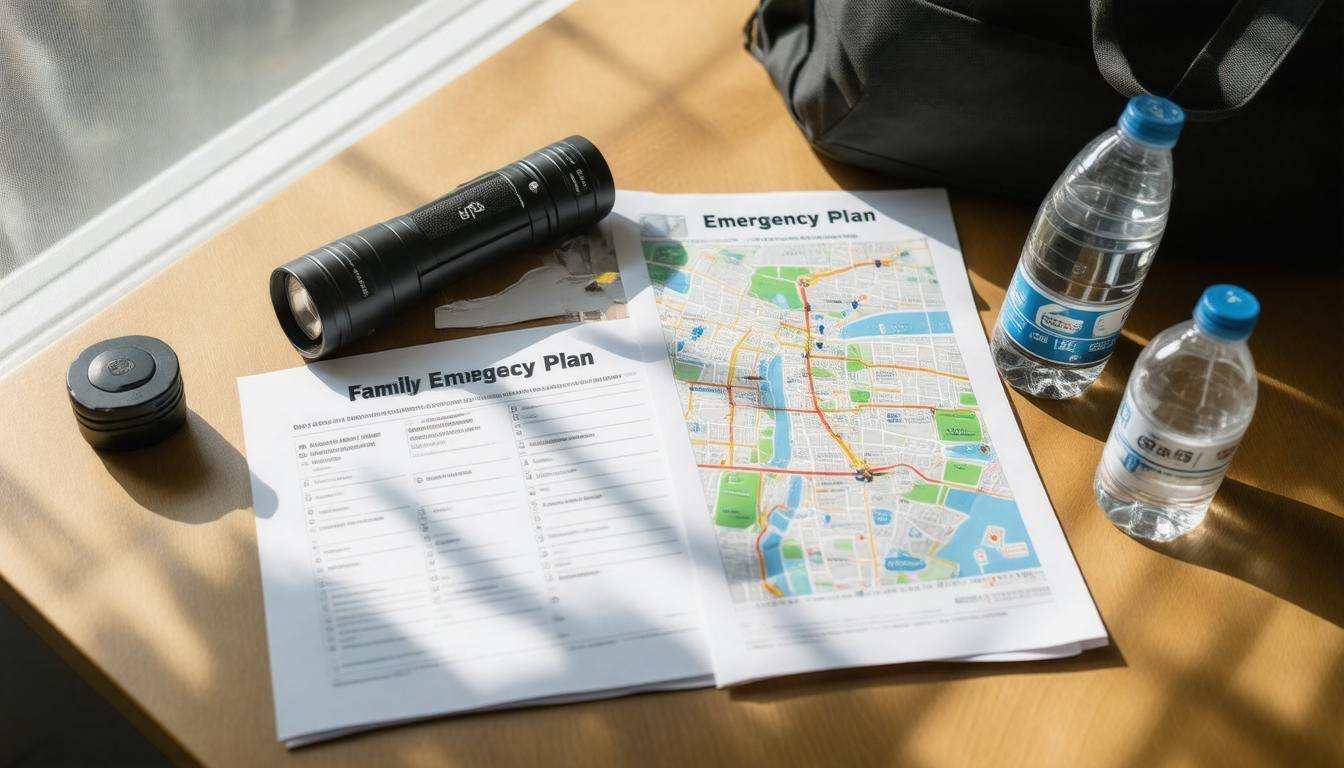
A well-thought-out evacuation plan acts as a roadmap, guiding your family through the steps to take when an earthquake strikes. To begin, it is crucial to designate an emergency contact who lives outside the quake-affected area. This person serves as a central point of communication for your family, allowing members to relay information about their whereabouts and safety status without confusion or panic.
Next, you should meticulously plan the evacuation routes from your home to safe open areas or community shelters. Visualize each route; perhaps use a map for clarity where everyone can see it. Each family member needs to familiarize themselves with these routes because stress levels can elevate instantly in an emergency situation, making it easy to forget even the most familiar paths.
However, knowing the routes isn’t enough—regular practice sessions are critical. By drilling these routes, you instill confidence in your family and reinforce their ability to act swiftly when time is of the essence.
Establishing a solid meeting point is also imperative. In the event of separation, whether due to chaos in the home or different locations at the time of an emergency, having a predetermined gathering spot allows everyone to reunite efficiently. Choose an identifiable location that is easily accessible and recognizable—like a nearby park or a specific tree.
It’s advisable to write this meeting point on a piece of paper and store it in easy-to-reach places, such as inside wallets or on refrigerator doors.
This structure around evacuation plans sets the stage for the importance of consistency in preparation. Engaging everyone in regular practice will further strengthen your family’s readiness for unexpected events.
Conducting Regular Safety Drills
Regular drills are essential for ensuring that everyone in your household is prepared to act swiftly and calmly when an earthquake strikes. By creating realistic scenarios during practice sessions, you help your family members become accustomed to the sudden and chaotic nature of seismic events. Just as schools in Osaka conduct monthly earthquake drills, replicating this approach at home helps different age groups understand their roles during an emergency. It’s all about getting everyone on the same page so that instincts kick in when needed.
Start by scheduling these drills once a month to ingrain the procedure into your family’s routine. As you gather everyone together, explain what will happen during the drill and why it’s necessary. The Drop, Cover, and Hold On technique becomes a practiced response that can protect lives. Encourage family members to drop down onto their hands and knees to prevent being knocked over, cover themselves under sturdy furniture, and hold on until the shaking stops.
It’s important to note that children might have fears when simulating earthquakes, but through repetition, they grow more confident.
One local family reported that these drills significantly improved their children’s confidence levels during minor tremors they experienced later. Instead of panicking, the kids knew exactly what to do during those brief moments of shaking because they had practiced. This familiarity reduces anxiety and increases comfort levels with the unpredictable nature of earthquakes.
Involving community resources like local emergency services or neighborhood groups can further bolster preparedness efforts. Together, families can enhance their readiness and contribute to a safer environment for all.
Utilizing Community Resources
Osaka’s community preparedness framework is not only effective but essential. With local organizations dedicated to disaster readiness, you have access to knowledge and training at your fingertips. For instance, the aforementioned report highlights that 68% of residents are already participating in workshops, showcasing a strong culture of collective safety among citizens. Engaging with these resources can empower you and your loved ones when preparing for seismic events.
One of the cornerstones of this network is local disaster response teams. These volunteers are often comprised of trained civilians who understand the specific risks associated with their neighborhoods. By attending meetings or joining these teams, you not only gain firsthand knowledge about emergency procedures but also become part of a support network during real crises. It’s comforting to know that in an emergency, you’ll have familiar faces by your side, all working together to navigate the chaos.
Connecting with your community offers an avenue for sharing tips and strategies that may not be covered during individual preparedness drills.
Beyond just response teams, Osaka offers multiple free first aid training sessions. These classes equip residents with lifesaving skills that could make all the difference after an earthquake hits. Imagine being able to assist an injured neighbor or friend simply because you took a few hours to learn first aid techniques. Plus, these training sessions often foster camaraderie among participants, building bonds that can last well beyond the classroom.
To maximize your preparation, it’s vital to locate and join your nearest disaster preparedness group. Many of these groups focus on the unique challenges posed by earthquakes. They conduct neighborhood drills that involve simulating evacuations and hiding under sturdy furniture, which reinforces vital safety habits. Discussing evacuation plans tailored for your locality allows everyone involved to think critically about how they will react in a real-life earthquake situation.
Additionally, community alert systems serve as crucial tools for keeping everyone informed before and during emergencies. These systems provide timely updates regarding seismic activity and safety alerts, ensuring you’re never caught off-guard. Your participation can lead to better awareness within the block and create a culture of preparedness where everyone feels responsible for each other’s safety.
Utilizing community resources transforms your personal emergency plan into actionable steps, ensuring you’re prepared not only individually but also as part of a united front against potential earthquakes. As we look ahead, understanding how to stay updated on seismic events will further strengthen our collective readiness and safety measures.
Staying Informed on Seismic Activity
Awareness of seismic activity empowers residents to respond promptly and effectively when tremors occur. Tuning into reliable sources like the Japan Meteorological Agency (JMA) can provide crucial updates on earthquakes happening both locally and nationwide. Their website offers real-time information, so make it a habit to check frequently, especially if you live in a high-risk area.
Beyond checking websites, consider following JMA’s social media accounts or subscribing to their newsletters for the latest alerts delivered directly to your inbox. In an emergency, every second counts, and proactive monitoring can mean the difference between safety and danger.
One essential tool for staying updated is earthquake alert apps. For instance, “Yurekuru Call” is one of the most widely used applications that sends immediate notifications right when seismic activity is detected. By downloading this app, you’ll receive alerts tailored to your location, keeping you well-informed and ready to act as necessary.
Statistics show that users of such earthquake alert apps can respond 30% faster during tremors compared to those who rely solely on traditional news sources alone. This improvement isn’t insignificant; it may help you take shelter or evacuate before an earthquake fully materializes, thus enhancing your safety.
With today’s technology at your fingertips, it’s easier than ever to keep track of seismic activity. Your chances of remaining safe increase dramatically by being proactive and engaged with your own preparedness strategies.
In light of these measures, effectively preparing for earthquakes includes staying informed and utilizing available resources. Being proactive can significantly enhance your safety during seismic events.
What local resources or organizations provide assistance or information on seismic safety preparation in Osaka?
In Osaka, local resources for seismic safety preparation include the Osaka City Disaster Prevention Office, which provides comprehensive guidelines and workshops on earthquake preparedness. Additionally, the Osaka Prefectural Government collaborates with organizations such as the Japan Meteorological Agency to disseminate real-time seismic information. It’s noteworthy that according to a 2023 survey, over 70% of Osaka residents reported being aware of local emergency protocols, reflecting a strong community initiative towards earthquake readiness.
What are some common misconceptions about earthquake preparedness that people in Osaka should be aware of?
Many residents in Osaka mistakenly believe that if their home survived past earthquakes without damage, it will remain safe during future quakes, leading to complacency. Additionally, some people think earthquake insurance is unnecessary, while studies show that 40% of households in quake-prone areas who have insurance recover more quickly post-disaster. It’s essential to understand that preparedness is an ongoing process—structural vulnerabilities can develop over time, and having a comprehensive emergency plan is crucial for safety and recovery.
How often should residents review and update their seismic safety preparation checklist?
Residents should review and update their seismic safety preparation checklist at least twice a year, ideally coinciding with the changing of seasons. Regular reviews ensure that any new family members, changes in household items, or advancements in safety technology are accounted for. According to studies, communities that regularly update their emergency plans see a 30% increase in preparedness levels during seismic events, significantly enhancing overall safety and response effectiveness.
How can families create an effective emergency plan tailored specifically for earthquakes in Osaka?
Families in Osaka can create an effective emergency plan by first identifying safe locations within their home, such as under sturdy furniture or against interior walls, to take cover during seismic events. Regularly conducting earthquake drills ensures everyone knows what to do and where to go; research suggests preparedness can reduce injury risk by up to 50%. Additionally, families should assemble an emergency kit with essentials like water, non-perishable food, medical supplies, and a flashlight. Staying informed about local seismic activity and community resources will further enhance their readiness for potential earthquakes.
What essential items should be included in a seismic safety preparation checklist for residents of Osaka?
Essential items for a seismic safety preparation checklist for residents of Osaka should include water and non-perishable food supplies (at least a three-day supply), a first aid kit, flashlights with extra batteries, a whistle for signaling, masks to help filter contaminated air, and hand sanitizer. According to the Japan Meteorological Agency, Osaka is at risk for significant earthquakes given its geological context, therefore having these essentials can significantly increase survival chances (with around 20% of Osaka’s population living within earthquake-prone zones). Additionally, portable phone chargers and local emergency contact information are critical for maintaining communication during emergencies.
